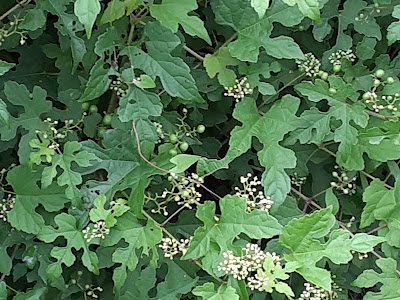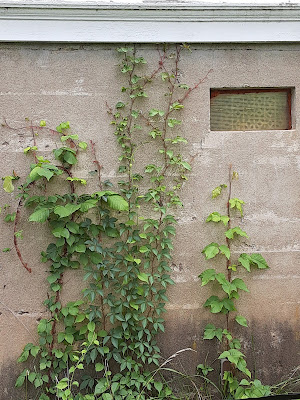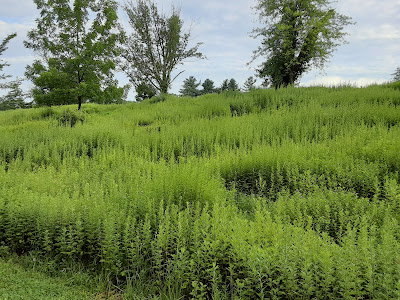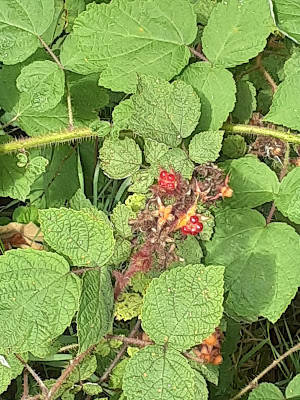On a recent less-humid morning I took a long walk around what I call Greystone and the maps now call the Central Park of Morris County. I was walking on the cross-country running track created in the back fields of what was once a psychiatric hospital. I was looking and listening for birds, as usual, and managed to find a few.
But after a while I started looking at the plants. In the area where saplings had been planted a few years ago there are now small trees - tulip poplar, sweetgum, sumac, among others - as well as fields of weeds I once thought were ragweed but I now know have the lovely name of common mugwort, which sounds like something out of Harry Potter. I like the mugwort because last year a drainage ditch filled with the stuff offered protection to at least four types of migrating sparrows, goldfinches and at least two types of warblers.
Back in September of 2019 I wrote about walking among the autumn weeds. It is now July of 2025 and the same weeds are already out thanks to a combination of warmer than usual temperatures and more than usual amounts of rain. Maybe they were always out in July, or maybe it's another sign of global warming.
So while I hate the weeds in my backyard with a passion, I enjoy the park weeds' flowers, fruits and seeds because they help pollenators and birds, migrating and those that hang around all year.
Here are some of my photos.
 |
| This is a wild grape vine. The fruits are now white but they will turn blue. They are enjoyed by sparrows, robins and other fruit-eating birds. The vine will engulf anything nearby. |
 |
| There is goldenrod that blooms in the middle of summer, and goldenrod that blooms near the end of summer. I grow the midsummer type. I presume this is the same type. |
 |
| This poison ivy was growing along the walls of what used to be the hospital dance hall. Unless cut down the ivy will completely cover the building. Obviously the Parks Dept. doesn't want to touch it. |
 |
| A field of mugwort provides hiding spaces for birds, deer and rabbits, as I saw during my walk. |
 |
| This weed with its yellow and orange flowers is known as the common toadflax, but I prefer its colloquial name of butter-and-eggs. It looks like a wild snapdragon. |
Unfortunately, the jewelweed was not flowering at the time. Hummingbirds really like this late summer weed's orange or yellow trumpet flowers, especially when the birds need fuel to help them migrate south.
As I discovered last year, the county Parks Department mows down the fields of mugwort and the other weeds, including the ones I photographed, in October. But like all seeding, fruiting and spreading weeds, they'll be back next year. Of that I've no doubt.







